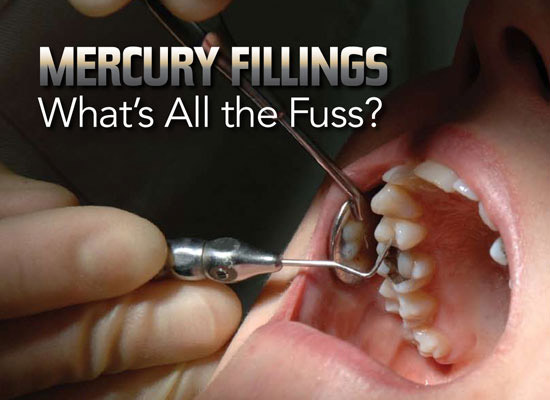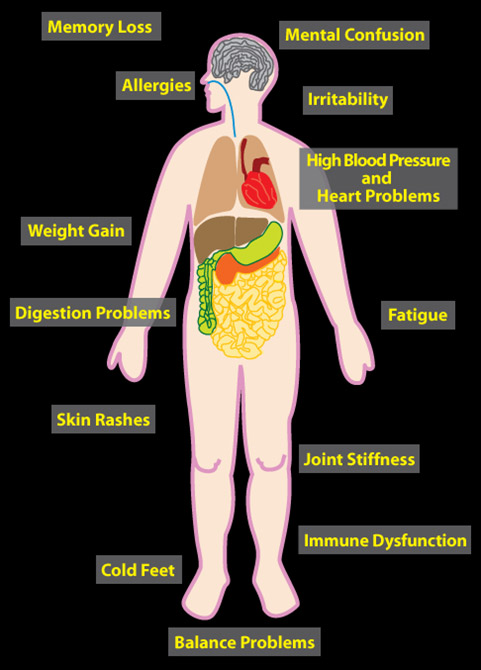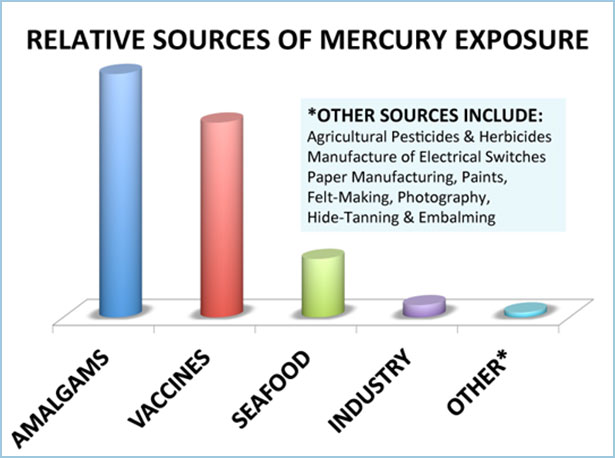
Amalgam Fillings
Know what is in your mouth
Most people recognize dental amalgams as silver fillings. Dental amalgam is a mixture of mercury, silver, tin and copper. Mercury, which makes up about 50 percent of the compound, is used to bind the metals together and to provide a strong, hard, durable filling. After years of research, mercury has been found to be the only element that will bind these metals together in such a way that can be easily manipulated into a tooth cavity.
Dental amalgam has withstood the test of time, which is why it is the material of choice. It has a 150-year proven track record and is still one of the most durable and least expensive materials used to a fill a cavity. It is estimated that more than 1 billion amalgam restorations (fillings) are placed annually. Dentists use dental amalgam because it is easier to work with than other alternatives. Some patients prefer dental amalgam to other alternatives because of its cost-effectiveness and ability to be placed in the tooth cavity quickly.
One of the most vexing issues in dentistry today revolves around the use of silver fillings (amalgams) in our mouths. Do we need to take out the old mercury-laden silver fillings for fear of health issues and replace them, or are there better restorative dentistry options that do not pose any potential risk to our health? Dental professionals in the United States and around the world are currently debating this hot issue.

Mercury is a powerful neurotoxin and, at certain levels, can cause neurological issues, autoimmune disease, chronic illnesses and mental disorders.
Special interests like the ADA - which was founded to support use of dental amalgam - have been successfully misleading the public for years regarding the true nature of dental amalgam by use of misinformation, money, and politics to suppress the truth.
But the science is clear that dental amalgam is a mixture of approximately 50% liquid mercury with various metals, including copper, silver and tin to form an unstable alloy that results in high levels of toxic metal exposure over time. Since mercury is a gas at room temperature, the mercury vaporizes continuously from the amalgam, resulting in high levels of mercury in the oral air and saliva, as is easily measured. Additionally, since amalgam is a mixture of metals in an electrolyte (saliva), this produces galvanic currents (battery effect) that pumps mercury and other toxic metals into the gums and oral mucosa, from which it is taken by the blood and nerves throughout the body.
Approximately 80% of the mercury in the oral air is absorbed by the blood in the lungs and is distributed throughout the body, along with the other mercury released by amalgam, rapidly passing out of the blood, crossing cell membranes and accumulating in the major organs that receive large amounts of blood: the brain, heart, liver, kidneys, and hormone glands. Over time this, along with exposures to other synergistic toxics, commonly results in chronic degenerative health conditions affecting all major body organs, as has been well documented in the medical literature.
With Bio-Energy Communication, a simple Zyto scan can determine if you are risk with mercury or any other metal toxin with recommendations as to detoxification protocols of heavy metal including mercury.
Visit www.amalgam.org for more information on dental amalgam mercury solutions.
www.youtube.com has a video called Smoking teeth = Poison Gas that shows the mercury vapors being released from an amalgam filling.

Mercury poisoning facts
Mercury poisoning facts by John P. Cunha, DO, FACOEP
- Mercury is a naturally occurring element that is found in air, water and soil. A highly toxic form (methylmercury) builds up in fish, shellfish and animals that eat fish. Fish and shellfish are the main sources of methylmercury exposure to humans.
- Mercury exposure at high levels can harm the brain, heart, kidneys, lungs, and immune system. High levels of methylmercury in the bloodstream of unborn babies and young children may harm the developing nervous system, making the child less able to think and learn.
- Symptoms of methylmercury poisoning may include impairment of peripheral vision; disturbances in sensations ("pins and needles" feelings); lack of coordination; impairment of speech, hearing, walking; and muscle weakness.
- Elemental (metallic) mercury primarily causes health effects when it is breathed as a vapor where it can be absorbed through the lungs. Symptoms include tremors, emotional changes, insomnia, weakness, muscle atrophy, twitching, headaches, disturbances in sensations, changes in nerve responses, and performance deficits on tests of cognitive function. Higher exposures may result in kidney effects, respiratory failure and death.
ZYTO Technology does not identify, diagnose or treat any disease or medical condition.
Information courtesy of Hal A. Huggins, DDS, MS and Biotics Research Company
